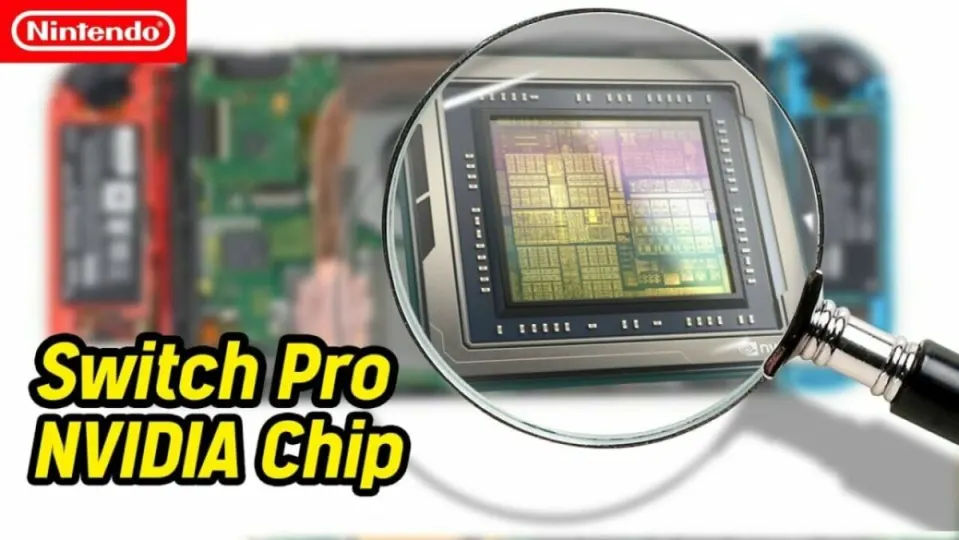We’ve been talking about the Nintendo Switch Pro, or Nintendo Switch 2, for about 4 or 5 years. We’re a bit impatient, and Nintendo is taking its time more than expected. But if we’re talking about credible rumors, we need to look back a couple of years.
Back in June 2021, the well-known tech leaker kopite7kimi posted a detailed image of Nvidia’s T234 processor, revealing for the first time that Nintendo would receive a custom variant, nicknamed T239.
In the two years that followed, a wealth of overwhelming evidence has essentially confirmed they were right. The T239 is an advanced mobile processor, based on an octa-core ARM A78C CPU cluster, paired with a custom graphics unit based on Nvidia’s Ampere architecture from the RTX 30 series, combined with some elements from the latest Ada Lovelace GPUs.
It is also compatible with Nvidia’s console-specific graphics API, which, according to Digital Foundry, practically confirms that it’s intended for the next generation of the Switch.
But at this point, it’s important to remember that this information is, for the time being, speculation. There is no confirmation from either Nintendo or Nvidia.
However, as our English colleagues say, we can indeed link the T239 to a Nintendo project, and there is no evidence that Nvidia has created this chip for anyone else.
An original processor that is too large for a console
For their own projects in the automotive and robotics market, the company already has the T234. To understand the customized variant, it’s important to know what the T234 is and why Nintendo couldn’t use this chip to begin with.
After all, if we go back to the original Switch, there was no custom processor. Despite Nvidia’s marketing suggesting otherwise when Nintendo’s hybrid was announced, the machine’s chip was a conventional Tegra X1, although with some elements (like lower CPU cores) disabled.
Designed from the beginning for the tablet, phone, and gaming market, the Tegra X1 was a failure until Nintendo used it for their hybrid console, the Switch, where it found a new purpose.
For Switch 2, Nvidia doesn’t have anything in the market that’s suitable for a successor. The latest Tegra processors, like the T234, are designed for a completely different and more demanding market. The building blocks are there for a powerful mobile chip, but the existing configuration is too large for a streamlined and conventional console.
Let’s be clear: the current T234 is a massive chip. With a die size of 455 mm2, it dwarfs the Xbox Series X processor at 360 mm2. It’s manufactured using the same 8nm technology from Samsung used in the RTX 30 series cards, so it’s a step behind the 7nm and 6nm processes used in current-generation consoles.
As for the CPU, it features 12 ARM A78AE CPU cores paired with a GPU based on the Ampere architecture from the 30 series with 2,048 CUDA cores and a 256-bit memory interface.
For the automotive and robotics market, the T234 requires a lot of machine learning performance, so it also incorporates a deep learning accelerator, whose capabilities can be enhanced with the tensor cores of the GPU.
Hence the creation of the current, smaller and more streamlined variant
What becomes immediately clear is that the T234 is simply too large to function in a mobile product. At 455 mm², this processor is much larger than the 392 mm² RTX 3070. And Digital Foundry has a good idea of what the T239 will look like.
To begin with, the CPU cluster will be quite different from the T234. Nvidia’s Linux distribution suggests that the T239 has eight CPU cores in a single cluster, clearly indicating that the ARM A78C will be used.
Memory bandwidth is crucial for a portable gaming machine and is the main bottleneck in the performance of the current Switch. Nvidia’s Linux update suggests a 128-bit interface, most likely paired with LPDDR5 memory.
We should expect an absolute maximum bandwidth of 102 GB/s, but, of course, Nintendo can choose to reduce it to improve efficiency. The T239 is compatible with DisplayPort (easily configurable for HDMI), just like the standard Switch. The difference is that there is enough bandwidth for HDMI 2.1, assuming Nintendo uses it.
Other leaked specifications from Nvidia’s Linux distribution are intriguing. There is a complete block for multimedia encoding and decoding on the T239, and even though the chip uses the Ampere architecture from the RTX 30 series, the multimedia block has been taken from the latest Ada Lovelace chips, so it should be faster and compatible with more formats, including AV1.
The clock-gating improvement (a way to enhance idle silicon efficiency) is another feature from Ada that has somehow made its way into the T239. Power consumption is a sensitive topic when discussing this chip.
Right now, the various leaks and unofficial disclosures mean that we probably know much more about the inner workings of the upcoming Nintendo machine than other more important aspects, like the complete concept of the new hardware, for example.
The T239 is a mobile-oriented processor, while Nintendo’s centralization of all development resources into a single platform almost certainly means that we are looking at another iteration of the Switch, rather than some entirely new concept.
However, given Nintendo’s history, a direct Switch 2 seems almost too straightforward. The truth is, right now, we have no idea.


